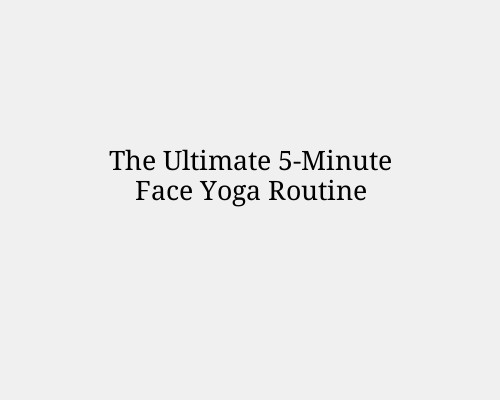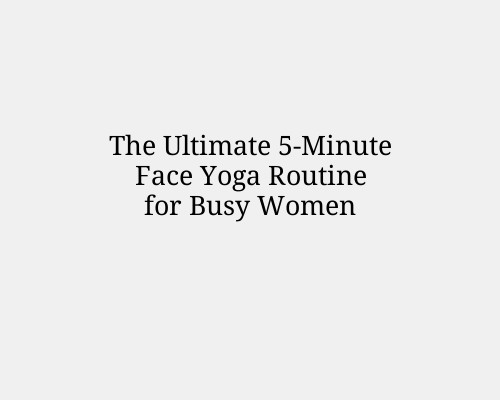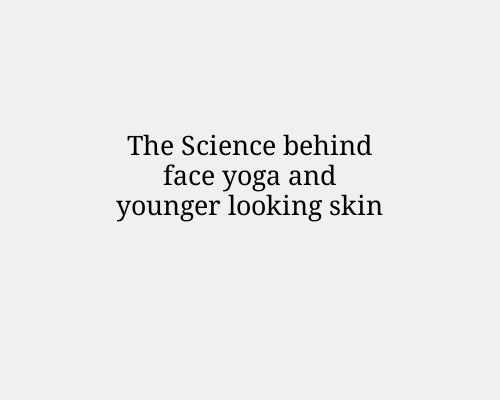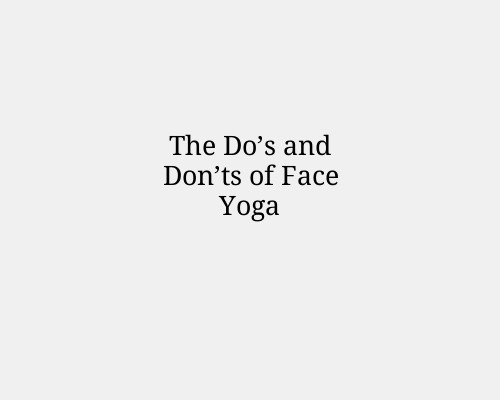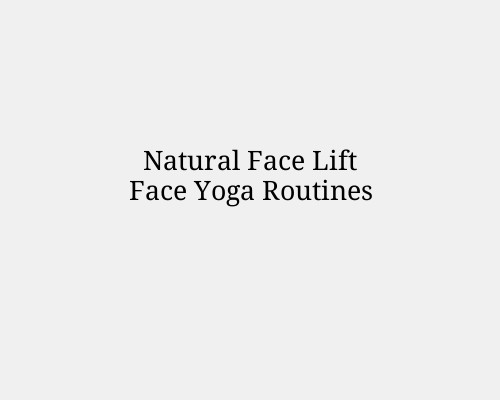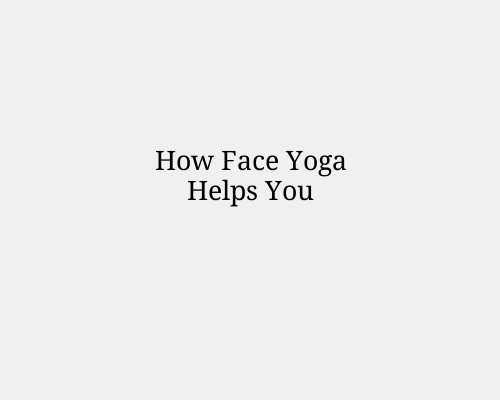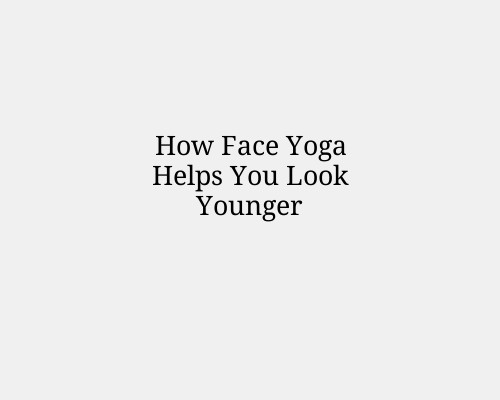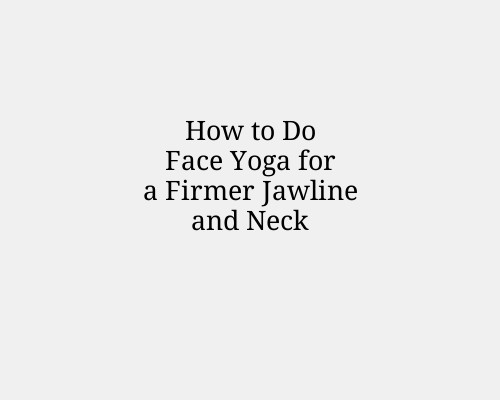
How to Do Face Yoga for a Firmer Jawline and Neck
Face yoga is a natural technique designed to tone the muscles beneath your facial skin, improving circulation, encouraging lymphatic drainage, and promoting a more sculpted appearance. If you’re concerned about sagging in the jawline and neck area—often due to aging, weight loss, or genetics—regular face yoga can help firm and define these zones without invasive treatments.
This beginner-friendly guide explains the benefits of face yoga and walks you through a step- by-step routine to target the jawline and neck.
Benefits of Face Yoga for the Jawline and Neck
Before jumping into the exercises, it's important to understand what face yoga actually does:
Tightens loose skin by toning underlying muscles
Improves blood circulation, helping deliver nutrients to skin cells
Stimulates collagen production, naturally increasing elasticity
Encourages lymphatic drainage, reducing puffiness
Non-invasive and cost-effective, with no downtime
Keep in mind: while results are not instant, consistent practice (at least 5 times a week) can yield visible improvements within 6 to 10 weeks.
Pre-Workout: Prepare Your Face and Neck
Cleanse your face and hands thoroughly to avoid clogging pores.
Apply a light facial oil or serum to reduce friction. This helps your fingers glide more easily over the skin and avoids tugging.
Sit upright or stand, keeping your posture straight with shoulders relaxed.
Face Yoga Routine for a Firmer Jawline and Neck
The Jaw Definer
Purpose: Strengthens the jaw muscles and tones sagging jowls.
Tilt your head back and look at the ceiling.
Push your lower jaw forward until you feel a stretch under the chin.
Hold this position for 10 seconds.
Return to neutral and repeat 10 times.
Tip: You should feel resistance under your chin and along your jawline.
The Neck Firmer ("Kiss the Sky")
Purpose: Targets platysma muscles that run from your jaw to your collarbone.
Tilt your head back and pucker your lips as if trying to kiss the ceiling.
Stretch your lips upward as far as they’ll go.
Hold for 5–10 seconds, then relax.
Repeat 10–12 times.
Bonus: This also tightens the skin just below the ears and on the neck.
The V
Purpose: Defines the jaw and tones the chin area.
Press both middle fingers to the inner corners of your eyebrows.
Apply pressure with your index fingers to the outer corners of your eyebrows.
Look up and form a strong squint, then relax.
Do this 6–8 times, then squeeze your eyes shut tightly for 10 seconds.
Note: Although this focuses on the upper face, it aids overall lifting and symmetry.
The Tongue Press
Purpose: Firms double chin and enhances neck contour.
Sit upright and press your tongue against the roof of your mouth.
While holding the tongue press, tilt your head back and look at the ceiling.
Hold for 5 seconds, then return to neutral.
Repeat 10–15 times.
Variation: Try doing this with your lips slightly pursed to increase resistance.
The Scoop
Purpose: Targets the lower jaw and chin fat.
Open your mouth and roll your lower jaw out as if you're trying to "scoop" something.
Imagine you’re drawing a semicircle with your lower jaw—down, forward, then up.
Repeat 5–7 scoops slowly, holding at the peak of each motion.
Cheek Lifter
Purpose: Enhances cheek volume and pulls the face upward, indirectly lifting the jaw.
Open your mouth and form an “O.”
Position your upper lip over your teeth.
Smile with the corners of your mouth to lift your cheeks.
Place your fingers lightly on the cheeks to feel them move upward.
Repeat 10–15 times.
Aftercare and Tips
Stay Hydrated: Muscles need water for elasticity and function.
Moisturize: Apply a firming cream or hydrating lotion post-workout to seal in moisture and improve skin texture.
Use SPF daily: Sun damage contributes to collagen breakdown and skin sagging.
Be consistent: Face yoga is most effective when it’s part of a routine. Set a reminder or incorporate it into your skincare regimen.
What to Expect
Face yoga isn’t a magic bullet. Expect subtle improvements rather than dramatic changes. In the beginning, you might feel slight muscle fatigue or tightness, which is normal. With regular practice, you’ll start to notice:
A more defined jawline
Reduced puffiness and fluid retention
Firmer skin on the neck and under the chin
Improved facial symmetry
When to Avoid Face Yoga
Face yoga is generally safe, but avoid it if:
You have recent facial surgery or cosmetic fillers/Botox (consult your provider first)
You're experiencing jaw joint pain (e.g., TMJ disorders)
You have skin conditions like rosacea or eczema in flare-up stages
Conclusion
Face yoga is a natural, accessible way to tone and sculpt the lower face and neck without invasive methods. With daily practice, proper technique, and a bit of patience, you can enhance your jawline and neck firmness for a more youthful and energized appearance.


